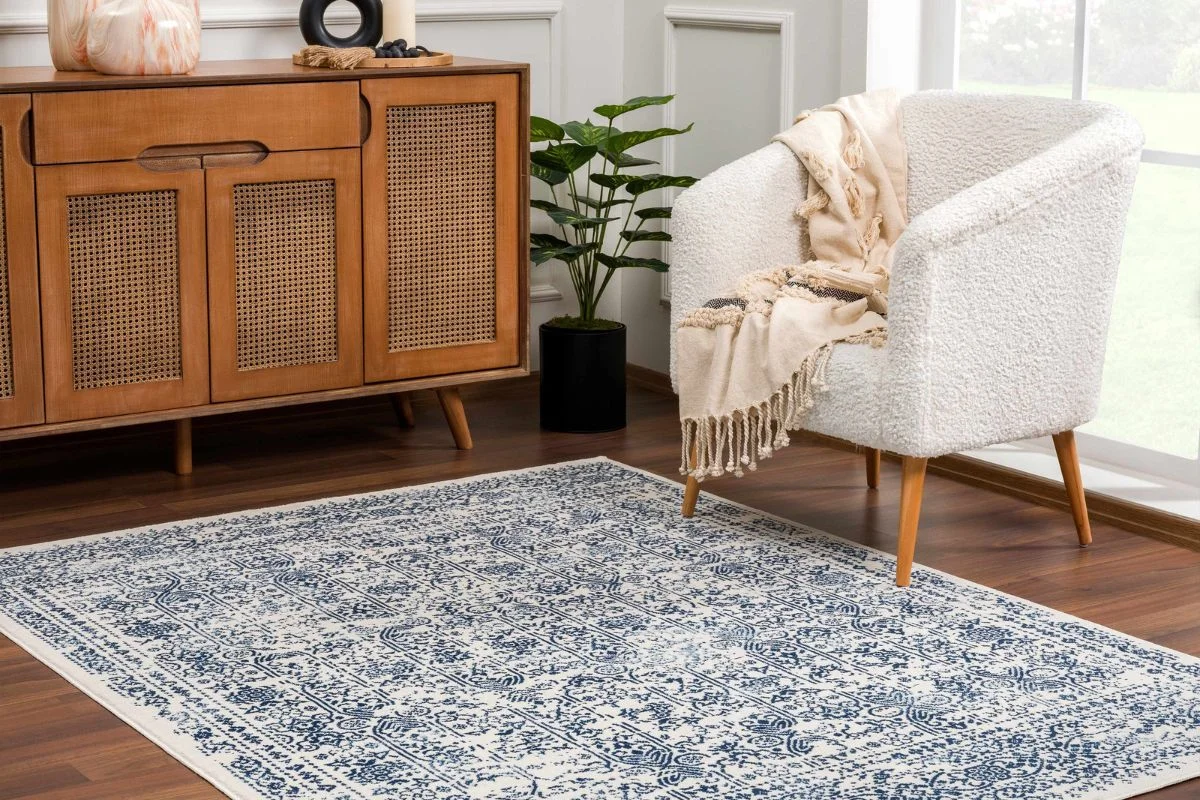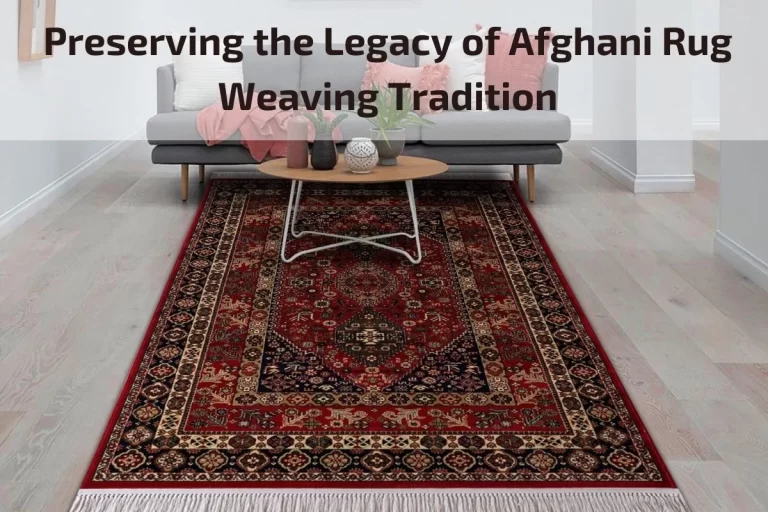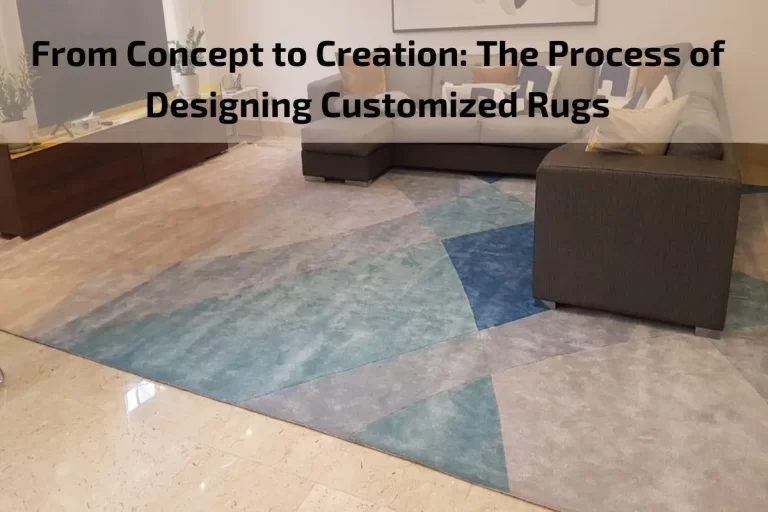Patterns and colors play a pivotal role in shaping the ambiance and character of any living space. When it comes to interior design, area rugs serve as dynamic canvases, offering endless possibilities for infusing personality and style into a room. From vibrant geometric motifs to soothing abstract patterns, the design choices in area rugs are as diverse as the tastes and preferences of homeowners.
In this exploration of patterns and colors, we delve into the fascinating world of area rug designs, uncovering the transformative power they hold within interior settings. Whether you seek to create a bold focal point or a harmonious blend of textures, the selection of patterns and colors in area rugs opens doors to endless creative expressions.
Join us as we unravel the artistry behind area rug designs, offering insights, inspiration, and practical tips for infusing your living spaces with personality and charm. Discover how the interplay of patterns and colors can elevate the aesthetic appeal of your home, reflecting your unique sense of style and creating inviting atmospheres that resonate with warmth and individuality.
Importance of area rugs in interior design
Area rugs play a crucial role in interior design, offering both aesthetic and practical benefits that enhance the overall look and feel of a space. Here’s a breakdown of the importance of area rugs in interior design:
Define Spaces: Area rugs serve as visual anchors that define different areas within a room. They can delineate seating areas in living rooms, dining spaces in open-plan layouts, or create cozy corners in bedrooms. By delineating spaces, area rugs help organize the room’s layout and create a sense of order and cohesion.
Add Warmth and Comfort: One of the key benefits of area rugs is their ability to add warmth and comfort to any space. Soft underfoot, they provide a welcoming surface that encourages relaxation and comfort. In colder climates, area rugs also act as insulators, helping to retain heat and create a cozy atmosphere during colder months.
Enhance Aesthetics: Area rugs are versatile design elements that can instantly elevate the aesthetic appeal of a room. Whether adding a pop of color, introducing interesting patterns, or incorporating texture, area rugs have the power to transform the look and feel of any space. They serve as focal points that tie together various design elements, from furniture to accessories, creating visually appealing and harmonious interiors.
Absorb Sound: Area rugs contribute to sound absorption within a room, reducing echoing and noise levels. This is particularly beneficial in open-plan spaces or rooms with hard flooring surfaces, such as hardwood or tile. By dampening sound, area rugs help create a more peaceful and comfortable environment, making conversations easier and minimizing disruptions.
Protect Flooring: Area rugs provide a protective layer that helps safeguard flooring from scratches, scuffs, and other damage caused by foot traffic and furniture movement. In high-traffic areas such as entryways and hallways, rugs act as a buffer, extending the lifespan of flooring materials and reducing maintenance costs over time.
Personalize Space: With a wide variety of styles, colors, patterns, and textures available, area rugs offer endless opportunities for personalization and self-expression in interior design. They allow homeowners to inject their unique personality and style into their living spaces, reflecting individual tastes and preferences.
Easy to Update: Unlike permanent flooring options, area rugs offer flexibility and versatility. They can be easily changed or updated to reflect seasonal trends, evolving tastes, or lifestyle changes. This flexibility allows homeowners to refresh their interiors without undergoing major renovations or investments.
Understanding the Benefits of Area Rugs
Area rugs serve as versatile and functional elements in interior design, offering a range of benefits that enhance the comfort, aesthetics, and functionality of living spaces. Here’s a closer look at the key advantages of incorporating area rugs into your home:
Enhanced Aesthetics: Area rugs add depth, texture, and visual interest to any room. They serve as focal points that tie together various design elements, such as furniture, artwork, and accessories, creating a cohesive and harmonious interior aesthetic. With a wide variety of colors, patterns, and textures available, area rugs allow homeowners to customize their spaces and express their personal style preferences.
Defined Spaces: One of the primary functions of area rugs is to define and delineate different functional areas within a room. Whether used to anchor a seating arrangement in the living room, define a dining area in an open-plan space, or create a cozy reading nook in the bedroom, area rugs help organize the layout of a room and establish clear boundaries between different zones.
Comfort and Warmth: Area rugs provide a soft and comfortable surface underfoot, enhancing the overall comfort of a room. In colder climates or rooms with hard flooring surfaces, such as hardwood or tile, area rugs act as insulators, helping to retain heat and create a cozy atmosphere. The plush texture of area rugs also adds an element of luxury and warmth to living spaces, making them inviting and conducive to relaxation.
Sound Absorption: Hard flooring surfaces can contribute to echoing and noise levels within a room. Area rugs help absorb sound and minimize noise, creating a quieter and more peaceful environment. This is particularly beneficial in open-plan layouts or rooms with high ceilings, where sound can easily reverberate. By dampening sound, area rugs improve acoustics and contribute to a more comfortable and enjoyable living experience.
Protection for Flooring: Area rugs provide a protective layer that helps safeguard flooring from scratches, scuffs, and other damage caused by foot traffic and furniture movement. By acting as a buffer between furniture legs and the floor, area rugs help prevent wear and tear, extending the lifespan of flooring materials and reducing maintenance costs over time. Additionally, area rugs can protect floors from spills and stains, making them easier to clean and maintain.
Versatility and Flexibility: Unlike permanent flooring options, area rugs offer flexibility and versatility. They can be easily moved, rearranged, or replaced to accommodate changing design preferences, seasonal decor, or lifestyle needs. This allows homeowners to refresh their interiors without undergoing major renovations or investments, making area rugs a cost-effective and practical design solution.
Exploring Different Styles and Designs of Area Rugs
Area rugs come in a vast array of styles and designs, each contributing its own unique flair to interior spaces. Whether you’re aiming for a traditional, contemporary, or eclectic look, there’s an area rug style to suit every taste and decor scheme. Let’s delve into the diverse world of area rug designs:
Traditional Oriental and Persian Rugs: Traditional Oriental and Persian rugs are timeless classics known for their intricate patterns, rich colors, and ornate motifs. These rugs often feature elaborate floral designs, medallions, and borders inspired by centuries-old weaving traditions from regions such as Persia, Turkey, and India. Their intricate craftsmanship and cultural significance add a touch of heritage and sophistication to any room.
Modern and Contemporary Rugs: Modern and contemporary rugs embrace clean lines, bold colors, and geometric patterns to create sleek and sophisticated designs. These rugs often feature abstract motifs, asymmetrical shapes, and minimalist compositions that reflect the aesthetic sensibilities of today’s design trends. With their emphasis on simplicity and versatility, modern rugs are ideal for adding a modern edge to any space.
Transitional Rugs: Transitional rugs blend elements of traditional and contemporary design, offering a harmonious balance between old-world charm and modern sophistication. These rugs often feature classic motifs and patterns reimagined in a contemporary context, creating a seamless fusion of past and present. Transitional rugs are perfect for homeowners seeking a timeless yet fresh approach to interior design.
Natural Fiber Rugs: Natural fiber rugs, such as jute, sisal, and seagrass, bring a touch of organic warmth and texture to living spaces. These eco-friendly rugs are woven from renewable plant materials and feature a rustic, tactile appeal that adds depth and character to any room. Natural fiber rugs are prized for their durability, sustainability, and ability to complement a variety of decor styles, from coastal to farmhouse chic.
Shag and Flokati Rugs: Shag and flokati rugs are characterized by their plush, high-pile construction and luxurious softness. These rugs feature long, fluffy fibers that create a cozy, inviting atmosphere and add a layer of warmth and comfort to hardwood or tile floors. Shag and flokati rugs come in a variety of colors and textures, making them versatile options for creating a cozy retreat in bedrooms, living rooms, or family spaces.
Kilim and Dhurrie Rugs: Kilim and dhurrie rugs are flat-woven textiles known for their bold colors, tribal motifs, and geometric patterns. Originating from regions such as Turkey, Morocco, and India, these rugs are handcrafted using traditional weaving techniques passed down through generations. Kilim and dhurrie rugs add a global-inspired touch to interiors and are prized for their craftsmanship, durability, and cultural significance.
Vintage and Antique Rugs: Vintage and antique rugs bring a sense of history and character to interior spaces with their time-worn patina and unique storytelling. These rugs often feature intricate patterns, faded hues, and subtle imperfections that reflect their journey through time. Vintage and antique rugs add depth, charm, and personality to any room, serving as conversation starters and focal points of interest
Choosing the Right Size and Placement for Area Rugs
Selecting the appropriate size and placement for area rugs is essential for achieving balance, harmony, and functionality within a room. Here’s a guide to help you choose the right size and placement for your area rugs:
Consider Room Dimensions: Before selecting an area rug, consider the dimensions of the room where it will be placed. Take accurate measurements of the space, including the length, width, and any alcoves or architectural features that may affect rug placement. This will help you determine the optimal size and shape of the rug for the room.
Define the Purpose: Identify the primary function of the area rug within the room. Are you looking to define a seating area in the living room, anchor a dining table in the dining area, or add warmth and texture to a bedroom? The purpose of the rug will influence its size, shape, and placement within the room.
Living Room: In the living room, the area rug should anchor the seating arrangement and create a cohesive conversation area. Ideally, the rug should be large enough to accommodate all furniture legs, including sofas, armchairs, and coffee tables. A common rule of thumb is to ensure that at least the front legs of all furniture pieces sit on the rug, creating a unified and visually appealing arrangement.
Dining Room: In the dining room, the area rug should extend beyond the edges of the dining table to allow ample space for chairs to be pulled out and seated comfortably. Measure the dimensions of the dining table, including the fully extended chairs, and add extra inches to each side to ensure proper coverage. A rug that is too small can make the dining area feel cramped and disjointed.
Bedroom: In the bedroom, area rugs can be placed under the bed to add warmth and comfort to the space. Consider placing a large rug that extends beyond the sides and foot of the bed, creating a soft landing spot for your feet when getting out of bed in the morning. Alternatively, opt for smaller rugs on either side of the bed or a runner rug at the foot of the bed for added visual interest.
Consider Traffic Flow: Take into account the flow of foot traffic within the room when determining rug placement. Leave sufficient space around the edges of the rug to allow for easy movement and circulation between furniture pieces. Avoid placing rugs in high-traffic pathways or door swing areas, as this can cause tripping hazards and obstruct the natural flow of movement.
Layering Rugs: Experiment with layering rugs to add depth, texture, and visual interest to your space. Layer a smaller rug on top of a larger rug to create contrast and dimension, or mix and match different textures and patterns for a personalized look. When layering rugs, ensure that they complement each other in terms of color, scale, and style to achieve a cohesive and balanced aesthetic.
Practical Tips for Maintaining and Caring for Area Rugs
Taking care of your area rugs ensures their longevity, beauty, and functionality. Here are some practical tips for maintaining and caring for your area rugs:
Regular Vacuuming: Vacuum your area rugs at least once a week to remove dust, dirt, and debris that accumulate on the surface. Use a vacuum cleaner with a beater bar or rotating brush attachment to loosen and lift dirt from the rug fibers effectively.
Rotate Your Rugs: Rotate your area rugs periodically to ensure even wear and sun exposure. This helps prevent uneven fading and extends the lifespan of your rugs. Aim to rotate your rugs every 6-12 months, especially if they are placed in high-traffic areas or receive direct sunlight.
Spot Cleaning: Attend to spills and stains promptly to prevent them from setting into the rug fibers. Blot the affected area with a clean, white cloth or paper towel to absorb as much liquid as possible. Avoid rubbing or scrubbing the stain, as this can spread it further and damage the rug. Use a mild detergent solution or specialized rug cleaner to gently blot the stain until it lifts.
Professional Cleaning: Schedule professional rug cleaning services at least once a year to deep clean and rejuvenate your area rugs. Professional cleaners have the expertise, equipment, and specialized cleaning solutions to remove embedded dirt, allergens, and stains effectively without causing damage to the rug fibers. Choose a reputable rug cleaning company experienced in handling various rug materials and textures.
Avoid Direct Sunlight: Minimize exposure to direct sunlight to prevent fading and discoloration of your area rugs. Consider using window treatments such as blinds or curtains to filter sunlight and protect your rugs from UV damage. If your rugs are placed in areas with prolonged sun exposure, rotate them periodically or consider using UV-blocking window film to reduce fading.
Use Rug Pads: Place rug pads under your area rugs to provide cushioning, stability, and protection for both the rug and the flooring underneath. Rug pads help prevent slipping, bunching, and wrinkling of rugs, ensuring they stay in place and lie flat. Choose rug pads made from non-slip materials such as rubber or felt, and trim them to fit the dimensions of your rugs for optimal coverage.
Brushing and Grooming: Occasionally brush or groom your area rugs to remove loose fibers, pet hair, and debris that may accumulate on the surface. Use a soft-bristled brush or a carpet rake to gently brush the rug fibers in the direction of the pile, taking care not to pull or tug on the fibers excessively.
Store Properly: If you need to store your area rugs temporarily, roll them up with the pile facing inward to protect the fibers from dust and damage. Avoid folding or creasing the rug, as this can cause permanent wrinkles and distortions. Store rolled rugs in a clean, dry area away from moisture, humidity, and pests.








